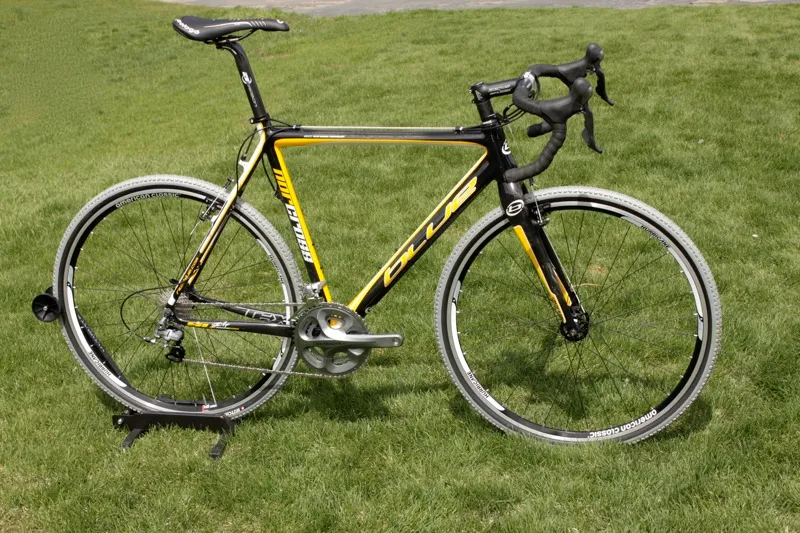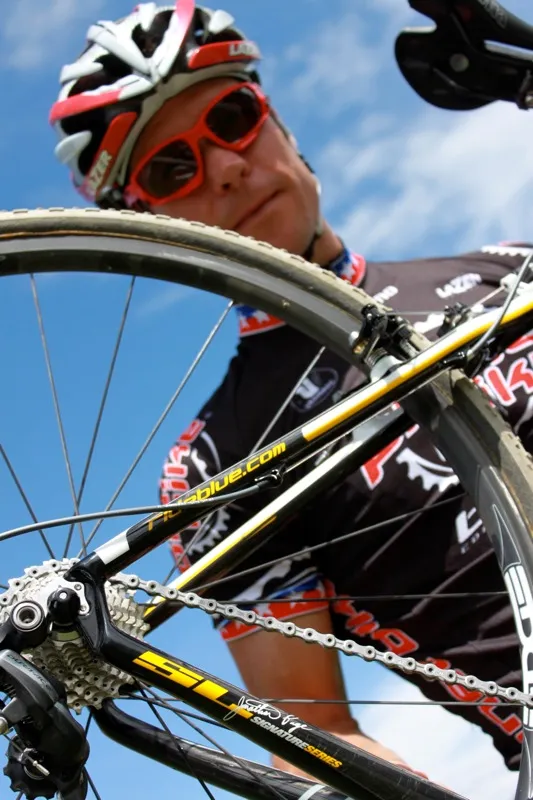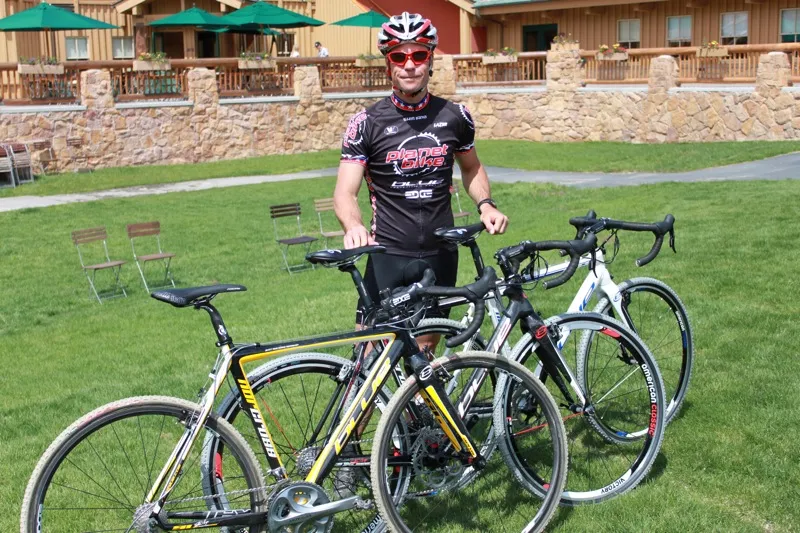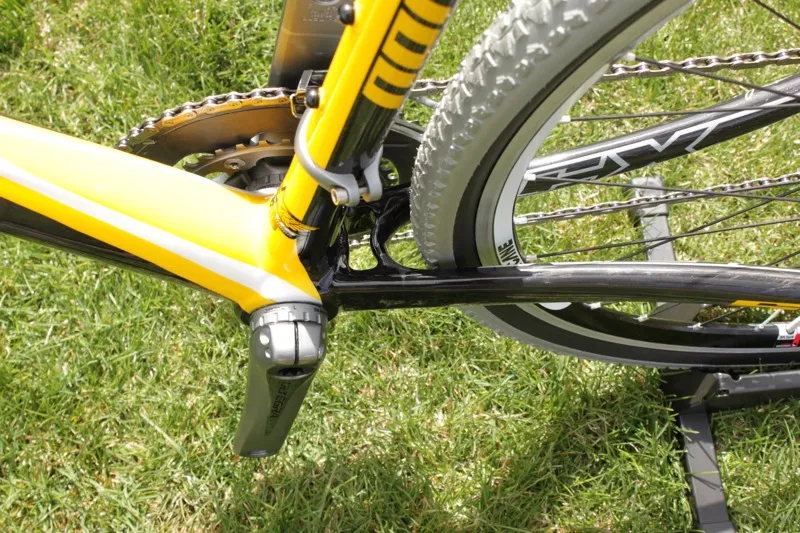Jonathan Page and his family have embraced European cyclo-cross – a sport that's very different from the version practised back home in America. His logic is sound: you race the best in the world if your aspiration is to be the best in the world.
While most of his fellow US pros struggle when racing in Europe and choose to focus on the domestic scene instead, where the competition and lifestyle is arguably easier on all fronts, 34-year-old Page has managed to reach the highest level, coming second at the 2007 world championships in Hooglede-Gits, Belgium.
You have to imagine that the New Hampshire native adheres to the adage of 'what doesn’t destroy you, makes you stronger'. BikeRadar sat down with Page to talk about his off-season prep and his opinions on the new UCI cyclo-cross rules instituted for the 2010/2011 season.
BR: What have you been up to this off-season?
JP: I did a few kermesse races in Belgium.
Pro Kermesses?
No, they’re amateur ones. They’re mixed, but the amateur ones are very difficult because there’s no team to control the race, so there’s constant attacking. It’s a heck of a good amount of training.
How long are they? 160km?
They’re a little shorter, like 120k of very fast circuits. You either race it and get lucky or you constantly try to go with the group and make the finale or you run out of gas.
What else were you up to this summer?
Mostly training. I went to Spain to do a Garmin training camp with my friend Christian Vande Velde. It was a Tour de France training camp at altitude. It was really cool.
How did that come about?
We go back to when we were racing as juniors on the national team together. We lost touch for a long time, just life. We [my family] were going to visit him at the Giro when it was in Holland and that happened to be the day that he crashed and broke his collarbone, so he came and stayed at our house in Belgium and then got surgery the next day. We caught up and he asked if I'd like to come to Spain to train. I said, “Shoot, that could be a great idea,” and I was lucky that my wife and family said to go and do it. I had a good time.
You raced some mountain bike events this summer. What kind of an attitude did you take to it?
Serious, but it’s not the end of the world if I don’t do well. I’m looking at it as another avenue, possibly, to see how I can work it. I’m exploring the options and having fun doing it.
Where's your home during the summer?
We’re mostly in Belgium but we do come back to the Untied States and stay with family. Home is home; it’s somewhere in America where our families are.
When does the training get serious for the upcoming cyclo-cross season?
It started back in March. My training is all geared towards the ’cross season. Basically, it’s what a road rider would do, but just the opposite in terms of timing. You go through the steps of a base and the power; using the racing I do, either on the mountain bike or on the road, as an opportunity for training and to see where I’m at.
Blue Competition Cycles built a whole signature line for you this year; tell us how that relationship works...
The owner of Blue bicycles, Mike Scott, I’ve known since I was a junior racer. I had difficulties with my prior sponsor and I called up Mike and said, “look, can you help me out?” He said 'no problem', and a few days later I had bikes to ride.
That’s how it began and then it progressed into [Blue asking me] to help design and build a frame – the Norcross. I put my two cents in, or three cents, and Chris Pic took what I like in a bicycle and used his engineering, and voilá, we’ve got a heck of a good bike. For the first time on a big job we did all right.

The 2011 Norcross SL heads up the Blue line as Page’s true signature bike
So the 2011 bikes are just an evolution of the original design, right?
Yeah, there were just a couple things that we made even better. They’re lighter with a different carbon layup and a different bottom bracket that offers better [mud] clearance.
So the mud clearance is the biggest influence you’ve had on the latest bike?
Yeah. I tell them how I feel or what’s happening with the bike and they put it together and make it work.
So how do you feel about the new rules the UCI announced this summer? Tyre width is down to 33mm and the disc brake ban has been lifted...
The tyre width rule is silly to me. Do I think it’s a big deal? No. I think it’s just a hassle, to be honest with you. At one point they were talking about only allowing one size, 30mm, with just one tread pattern. It really just creates more of a problem for the people making them.
As for the brakes, I’m not going to use disc brakes, for now, just because it’s not an option and I have perfectly good cantilever brakes from TRP. I can still ride my bike fine [with these new rules].
How about the modifications to barrier heights; will that affect your riding style?
The barriers in America seem to be faster and the barriers – if there are any – in Europe you kind of have to get off your bike anyway. For a good bike handler, who can bunnyhop them, that can be an advantage… I’ll get good at it if I have to. Is that what you’re getting at? Normally, I don’t bunnyhop stuff that’s high, but I can do it, if I choose to. I’d rather be safe than sorry, in general. Those barriers aren’t soft – ouch!

A portion of the sale price of each model with Page's signature on its chainstay will go directly to his racing programme


